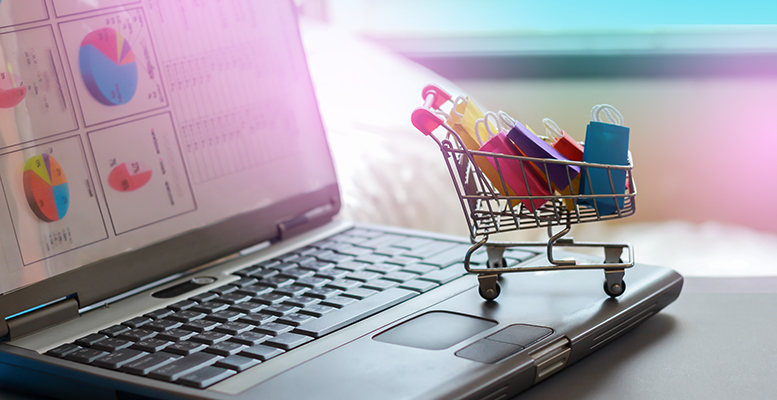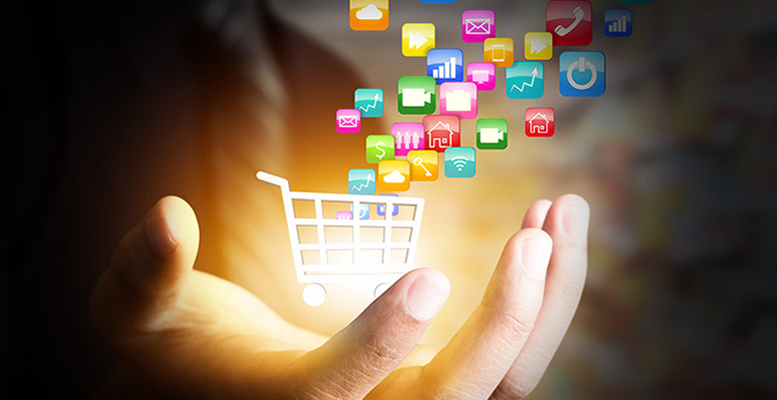[Infographic] Top 5 Trends in Android Development
From Cupcake to Oreo, the evolution of Android has been outstanding. Watch out the top 5 trends that are driving Android development today.
From Cupcake to Oreo, the evolution of Android has been outstanding. Watch out the top 5 trends that are driving Android development today.
Blockchain is a revolutionary technology that has taken the world by storm. This infographic simplifies the concept of Blockchain and explains how it works.


Strong cybersecurity is no longer a good business practice. It’s a must-have for all enterprises. Here are three ways in which Blockchain impacts the world of cybersecurity for good.
No business can afford a data breach today. But as technology grows exponentially, the risk of a cyber-attack increases manifold. Security incidents can occur anywhere, regardless the size and nature of the business. Recent data breaches at huge retail chains like Kmart and social media giants like Facebook have taught important cybersecurity lessons to businesses worldwide.
Maintaining the cybersecurity of an enterprise is an ongoing process and needs constant vigilance and software/technology upgrades. The emergence of Blockchain has proven to be the missing piece to the jigsaw puzzle of worldwide cybersecurity solutions. Although it initially emerged as the technology behind cryptocurrency, Blockchain is now being widely recognized by several other industries like retail, healthcare and Information Technology.
The mere fact that every Blockchain transaction is validated by a digital signature, and is transparent among the users sets the foundation for enhanced data security. Here are three ways Blockchain technology is revolutionizing the cybersecurity space for modern data-driven enterprises.
Enhanced data security
Blockchain, as its name suggests is a chain of digital ledgers, each called a block. Each block contains information of the activity carried out and is added to the chain. For a Blockchain transaction to be hacked or attacked, a cybercriminal would have to unblock the chain, which is difficult, almost impossible with the public or private digital signature attached to each block in the chain.
This feature offers businesses with enhanced data security across the enterprise. Use of Blockchain to carry out key business activities comprising of sensitive data such as processing credit card payments ensures that client data is well protected and highly secure.
Prevention of data manipulation
Alteration attacks are a major blow to the cybersecurity of an enterprise. When a hacker makes unauthorized modifications to data or a code, it affects the integrity of data, leading to significant misinterpretation. Employing a cryptographic technology reduces the risk of data manipulation significantly.
Blockchain transactions are decentralized and the information is shared via a peer-to-peer network, is updated across each connected system regularly. It requires massive computing ability and makes it difficult for hackers to modify or alter transaction data, since it cannot be changed on a single computer preventing data manipulation to a great extent.
Detection of fraud
The recent Facebook-Cambridge Analytica breach that came to light in March 2018 was a gradual process that started in 2013 with a small online quiz. It was only addressed when it became huge and obvious, with sensitive data of about 50 million people being misused. One of the biggest setbacks of traditional cybersecurity systems is the lack of visibility of data as it is treated across the enterprise, and the ability to notice malicious activity right in the beginning.
Blockchain offers transparency in transactions and enhanced visibility of data through the chain. Each block is shared with a network of computers which verify and validate a transaction using a digital signature. Since every block is inter-connected, it also enables complete visibility of a transaction right from the first block. A suspicious activity of any kind can be immediately noticed and brought to notice. That way, Blockchain allows businesses to detect and prevent fraud right from the point where it starts budding.
In today’s dynamic landscape, technology rules businesses. As technology grows, data grows too; and it eventually increases the vulnerability of an enterprise to cybercrime. Blockchain and cybersecurity are a match made in heaven. Implementing Blockchain as a part of your cybersecurity strategy can improve your ability to fight back cybercrime effectively and ensure greater data privacy across the enterprise.

The timeline of Android development has been phenomenal over the decade. As it keeps upgrading, take a look at the top technology trends influencing Android development today.
The birth of Android was a remarkable milestone in the world of technology. Ever since it was introduced, Android has evolved significantly as a strong mobile operating system.
The first ever version of Android came in 2008, with no fancy name and some basic features. Soon, its first confectionary-named update, Cupcake, with a virtual keyboard feature was released. Since then, there was no looking back!
Before we could even realize, Android had reshaped the world of mobility and swept over the consumer market. With its outstanding features and diverse versions, Android became the most preferred operating systems by mobile users around the globe. Today, as much as 2 billion Android devices are being used worldwide. From Cupcake to Donut, to Honeycomb to Oreo and now Nougat, every transformation of Android has always been a notch higher and better than its previous version. But, that’s not all. Android continues to grow with advancements in technology and brings something unique and phenomenal every time.
Augmented Reality and Virtual Reality
Augmented Reality (AR) and Virtual Reality (VR) have proven that technology can literally transport us into a whole new world. While AR creates a digital experience by putting virtual objects in a real environment, VR seals up the user’s vision and creates a different visual environment.
Android is using AR and VR technologies extensively to create apps that can enhance user experience in unique ways. Some of the most popular Android apps that use AR and VR are Snapchat, Pokemon Go and Google Cardboard.
M-commerce Applications
The emergence of e-commerce had subtly announced that m-commerce would follow. If e-commerce is the process of buying and selling things using the internet, m-commerce is even more convenient. M-commerce applications allow users to buy or sell goods and services using hand-held devices.
M-commerce is redesigning the way businesses operate and paving the way for cashless trading. From e-ticketing to mobile banking and e-tailing to mobile marketing, the list of m-commerce applications being developed by Android is endless today.
Enterprise App Development
The excessive use of hand-held devices has led to the trend of enterprise mobility among businesses around the world. Enterprise mobility enables employees to carry out business tasks using mobile devices, even while they’re not in the office premises. It also helps in effective business communication and improves productivities.
Because of its widespread usage among people of all age groups and geographies, Android has now become the go-to operating system for most organizations to execute their enterprise mobility strategy. G-Suite and Managed Google Play Accounts are the most widely used methods of deploying Android in the workplace.
Virtual Assistants
Artificial Intelligence and Machine Learning are making our lives simpler by developing voice and text assistants that can do hundreds of errands for us, like web searching, predicting weather, updating stock information, booking tickets, scheduling meetings, and much more.
Ever since Siri was introduced by Apple in 2011, virtual assistants became highly popular. Soon, Android started developing similar AI based chat and voice run virtual assistants for its users. Some of the most popular Android virtual assistants are Google Now, Cortana, Robin and Dragon Mobile Assistant.
Smart Contracts using Blockchain
Blockchain has grown to become the most revolutionary technology of the decade, with hundreds of uses other than cryptocurrency. Android is using Blockchain to develop “Smart Contracts”. Smart contracts are self-executing contracts with the terms of the agreement between buyer and seller carried out across a decentralized blockchain network.
The use of smart contracts makes transactions using hand-held devices more secure, traceable and faster. It also eliminates the need for middle-men to execute transactions. For example, something as simple as booking a movie ticket, to as complex as transferring money between bank accounts, smart contracts makes it simpler and faster than before.
The world of Android is vast and endless; and it is always exciting to see what Android has in store for us with its latest update. Google has been constantly innovating and improving Android since the time it was first launched. And, the future of Android looks only brighter with each day.

The retail industry today is uber competitive and ever evolving. Are you strategizing your retail business effectively?
The retail industry is huge, and it’s only growing. The global retail market is expected to grow as big as 24.86 trillion dollars by the end of 2018. However, it’s not only growing in size, it’s also growing with technology. From traditional brick and mortar stores to lucrative e-commerce websites, the retail journey has been a complete makeover; a digital makeover!
There are multiple factors that have driven this retail transformation – growing consumer demands, cut-throat competition, the emergence of digitization, and changing industry regulations. In such a dynamic world, retailers need something extraordinary – a winning retail strategy; to stand out in the market and succeed continually. In this article, I’ve listed the most scalable strategies for smart retailing.
From retailing to e-tailing
E-commerce is probably the biggest revolution in the world of retail. It allows retailers to expand their businesses beyond geographies, enables round-the-clock trading and reduces the cost and efforts involved in the maintenance of a physical space.
Retail and e-commerce are like a match made in heaven. Businesses around the globe are now rethinking their traditional retail models and embracing the trends in e-commerce. Whether you’re running a century old retail store, or a recent start up, e-tailing is a winning business move for all retailers.
Retail mobility
Mobility is everywhere, spreading across all industries and all businesses like wildfire. The number of smartphone users around the world is estimated to go up to 2.87 billion by 2020. This is the primary reason for businesses to adopt mobile technology.
From interactive consumer apps to mobile apps for internal communication, retailers are using mobile technologies to capture global markets, enhance customer engagement, manage daily retail operations and improve overall branding. Mobility is an inevitable change that every retail enterprise will have to implement at some point in future; the sooner the better.
Smart marketing
Times are changing, and marketing in retail has seen a massive transition. Today, marketers are using analytics and automation for impactful marketing. Behavioral analytics allows retail marketers to hit the right target market and offer personalized deals.
Many retailers are also implementing customer loyalty initiatives like discount, rebates and privilege based programs to retain and engage customers for a long time. Marketing is an ongoing activity and a critical aspect to retail success, and needs to be upgraded and reinvented with time to keep up with changing times.
Innovative customer engagement
The consumer rules retail. One of the biggest challenges retailers constantly face is engaging their customers effectively. With all the market competition and millions of alternatives available, customers tend to be picky with their sellers, and only expect the best experience.
Several innovative methods and disruptive technologies are emerging to help retailers improve customer engagement. Customer service automation, CRM tools and AI based chatbots and voicebots are being used to resolve customer issues, guide and help them through their retail journey and offer the best consumer experience.
Smart ERP
There’s a lot more to retail than trading goods and catering to customer needs. Retailers need to manage their resources – people, processes, inventories, accounts, and data effectively. That’s where Enterprise Resource Management comes to the picture.
Retailers are now adopting Cloud ERP solutions and Business Intelligence tools to manage retail data, inventories and accounts. It also helps them monitor business performance and channelize their human resources effectively. Retailers need the right mix of BI and ERP solutions to optimize retail activities efficiently.
The retail industry is fast moving and it calls for continuous strategizing. Retailers need a scalable strategy to stand out and prosper in the market. The scope for growth in retail is infinite. However, it is a greasy pole and success largely depends on how well you tackle challenges and adapt to change.

Innovative technology opens doors to endless opportunities for retailers. Here are the top five technology trends that are hugely influencing the world of retail.
Change is the only constant in the world of business today. The new wave of technology is rising at a phenomenal rate, and businesses have no other option but to adapt and grow with technology. Like all other businesses and industry spaces, the retail industry is highly influenced by the latest innovations in the tech world.
Technologies like Artificial Intelligence, Internet of Things, and Robotic Automation are digitizing the retail industry to its core. Here are five major technology trends that are running the retail industry worldwide.
E-Commerce Engagement
There has been a significant shift towards e-commerce markets over the past decade. The worldwide e-commerce market is expected to grow by 56% from 2015-2022. Consumers are widely accepting e-commerce platforms for retail transactions. This has driven retail enterprises to look for ways to expand their businesses online. E-commerce allows retailers to reach a wider customer base and generate revenues from untapped markets. It is also a great way to engage customers effectively, while enhancing their brand image.
Retail Analytics
With the emergence of big data, analytics has begun to play a major role in influencing retail operations. Retail analytics covers diverse retail activities and allows businesses to make well informed decisions. The scope for retail analytics is expected to double from 2016-2020, with a global spending of over $7 billion. Retailers are using analytics to monitor customer behavior, predict market trends, manage inventories and measure performance.
Smart Logistics
Managing logistics is a primary activity in the retail value chain. Managing the movement and distribution of retail goods effectively leads to significant time and cost optimization. Technology advancements like IoT, AI and Business Intelligence are now redefining retail logistics. Retailers are using IoT and BI tools to track shipment of products, their movement from source to destination and their location in real time. This in turn ensures timely procurement of goods and reduction in theft or loss in transit.
Retail Mobility
This is the era of smartphones and hand-held devices. Businesses worldwide are going mobile-first and finding ways to engage consumers effectively through mobility. Mobile technology is spreading widely due to the speed and convenience it offers; to both customers and businesses. Retailers are widely using mobility to attract leads, offer personalized deals and enrich customer experience. Many retailers are also adopting enterprise mobility, optimizing their workflows and enhancing productivities using mobile technology.
Supply Chain Management
Supply chain management is a key aspect to efficient retail management. It includes a wide range of activities including retail planning, procurement, transportation, inventory management and day-to-day retail operations. Retailers are now moving to Cloud-based platforms and automated ERP solutions to attain end-to-end supply chain management. SCM drives functional efficiencies, improve business performance and gain competitive edge.
Enterprises are adopting latest technology trends and digitizing their operations to catch up with the rising competition levels. Sooner or later, digital transformation will become a must for all retail businesses, small or big. Technology keeps evolving, and the best strategy to survive and grow in today’s dynamic world is to keep up with it.